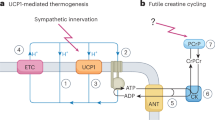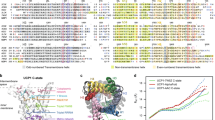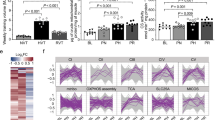Abstract
The recently cloned uncoupling proteins -2 and -3 (UCP2, UCP3) cDNAs encode for proteins with 57–59% homology with brown adipose tissuen uncoupling protein (UCP1) that can function as uncouplers of phosphorylation. The presentations of this Session of the Symposium were largely based on mRNA measurements, with one study showing that protein concentrations are well predicted by changes in mRNA in human muscles. Overall the observations suggest more complexity than anticipated. These observations are for the moment hard to reconcile with a simple role for these proteins in energy dissipation. Just the marked differences in tissue distribution of the two novel UCPs suggest they have different functions. It is possible that the activity, rather than the concentrations of these proteins, is regulated. The investigation of this possibility will hopefully enlighten us on their physiological role.
This is a preview of subscription content, access via your institution
Access options
Subscribe to this journal
Receive 12 print issues and online access
$259.00 per year
only $21.58 per issue
Buy this article
- Purchase on Springer Link
- Instant access to full article PDF
Prices may be subject to local taxes which are calculated during checkout
Similar content being viewed by others
Author information
Authors and Affiliations
Corresponding author
Rights and permissions
About this article
Cite this article
Enrique Silva, J. The physiological role of the novel uncoupling proteins: View from the chair. Int J Obes 23 (Suppl 6), S72–S74 (1999). https://doi.org/10.1038/sj.ijo.0800952
Published:
Issue Date:
DOI: https://doi.org/10.1038/sj.ijo.0800952
Keywords
This article is cited by
-
Changes in UCP expression in tissues of Zucker rats fed diets with different protein content
Journal of Physiology and Biochemistry (2002)
-
Uncoupling protein 3 genetic variants in human obesity: the c-55t promoter polymorphism is negatively correlated with body mass index in a UK Caucasian population
International Journal of Obesity (2001)



